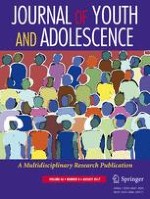16-01-2017 | Empirical Research
The Role of Adolescent Friendship Group Integration and Cohesion in Weapon-Related Violent Crime as a Young Adult
Gepubliceerd in: Journal of Youth and Adolescence | Uitgave 8/2017
Log in om toegang te krijgenAbstract
Weapon-related violent crime is a serious, complex, and multifaceted public health problem. The present study uses data from Waves I and III of Add Health (n = 10,482, 54% female) to examine how friendship group integration and cohesion in adolescence (ages 12–19) is associated with weapon-related criminal activity as a young adult (ages 18–26). Results indicate that greater cohesion in friendship groups is associated with significantly lower weapon-related criminal activity in young adulthood. In addition, for adolescent girls, a greater number of close friendship ties—an indicator of friendship group integration—is associated with less weapon-related criminal activity in young adulthood. These findings suggest that school-based initiatives to facilitate inclusive and cohesive adolescent peer communities may be an effective strategy to curb weapon-related criminal activity in young adulthood.
